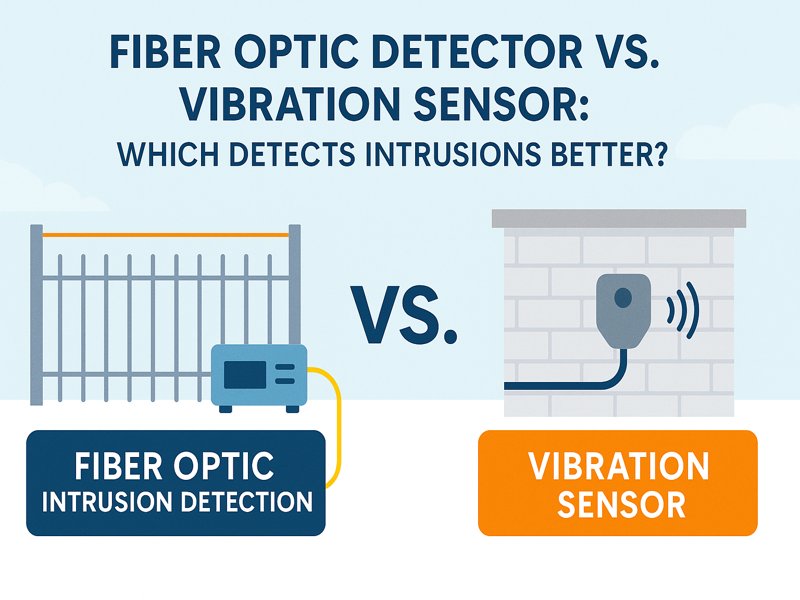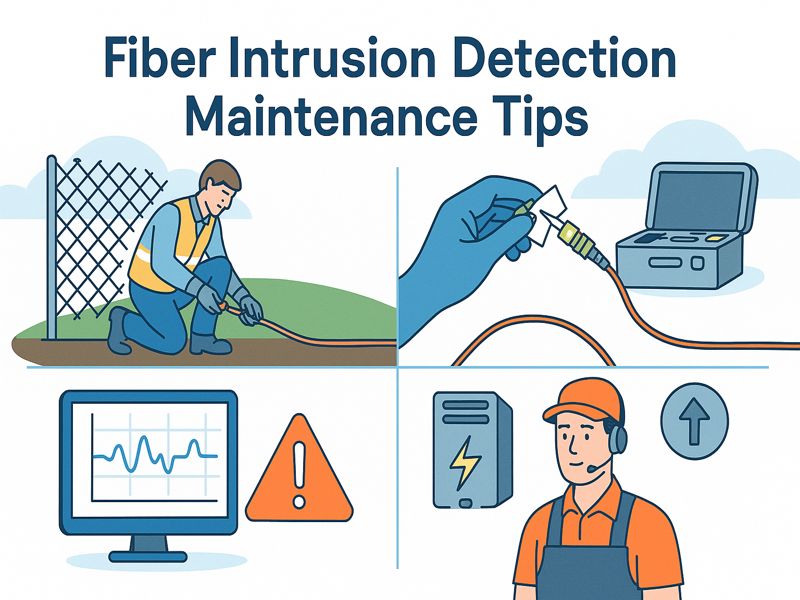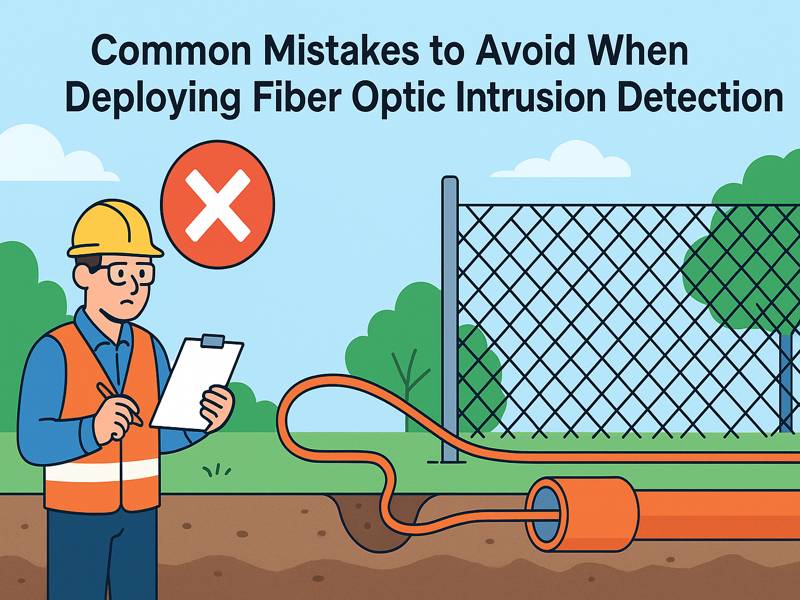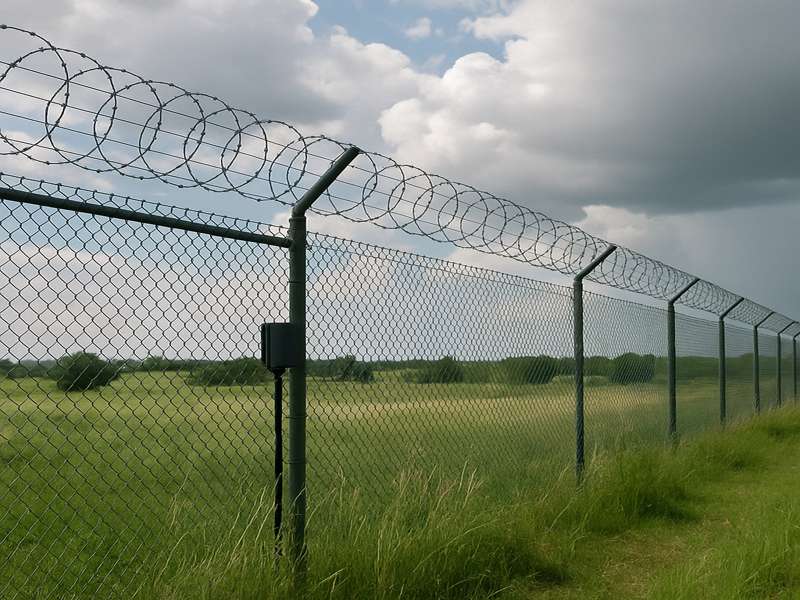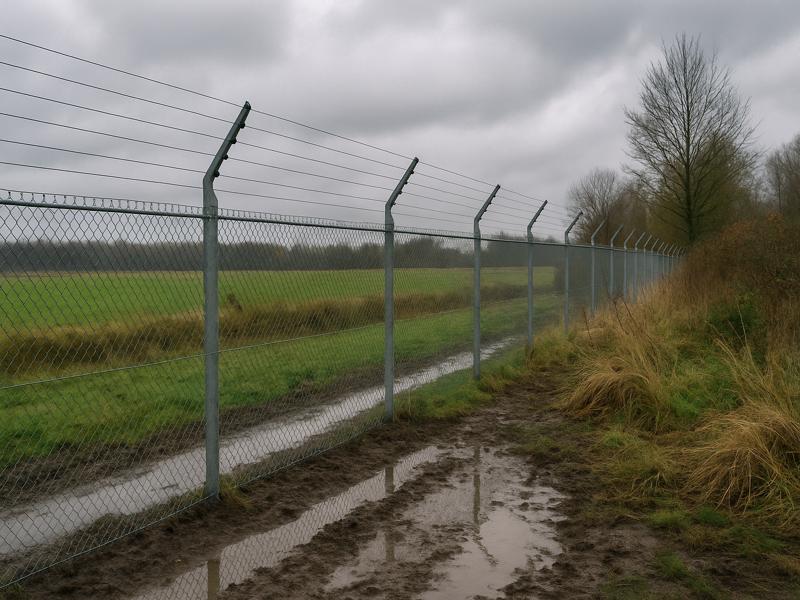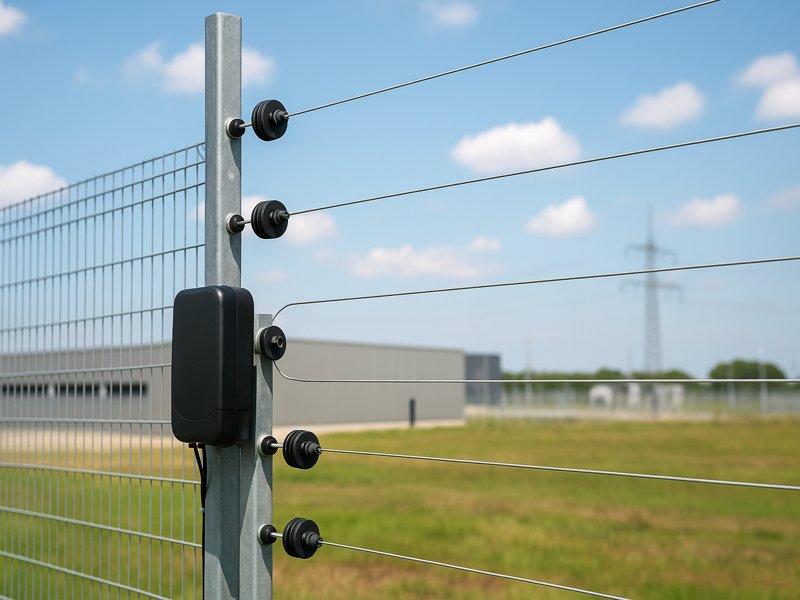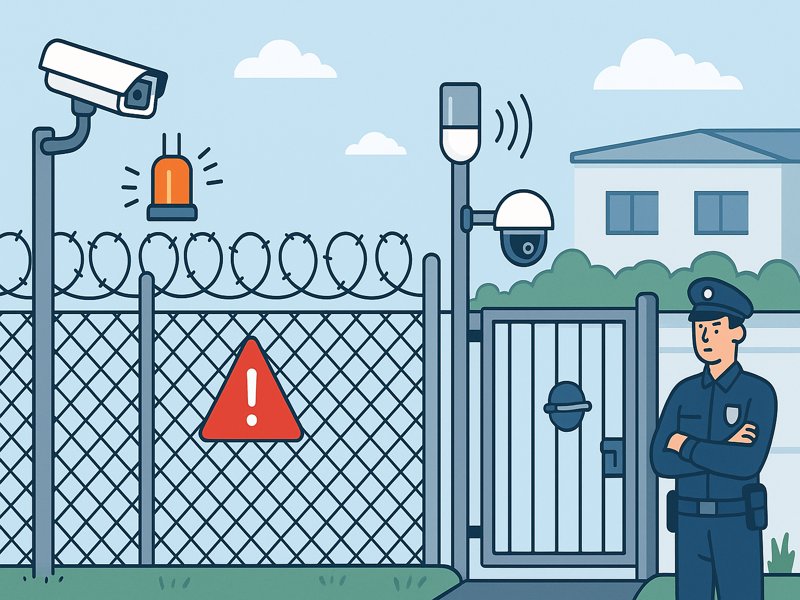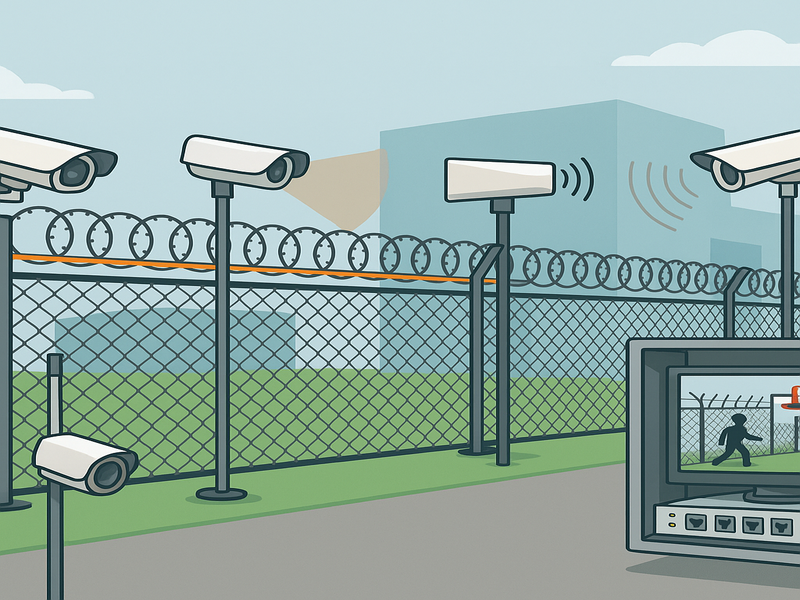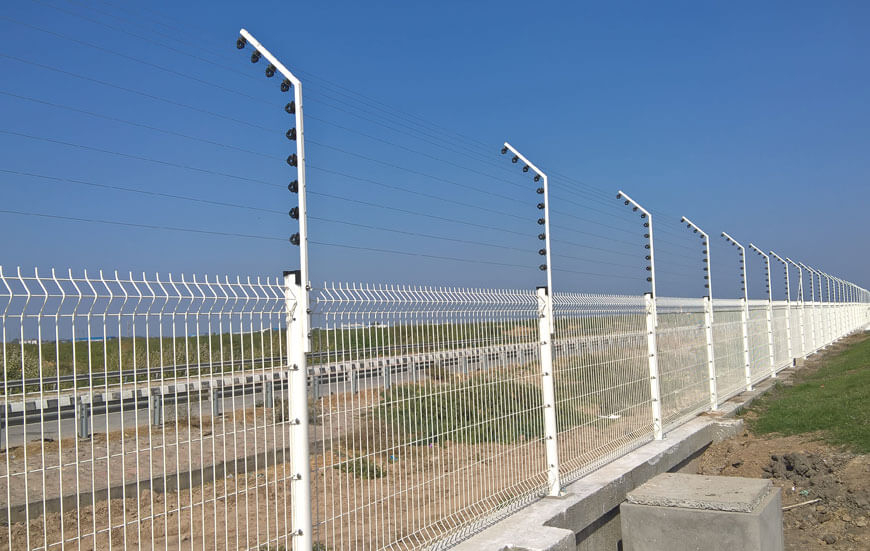Fibre Optic Detector vs. Vibration Sensor: Which Detects Intrusions Better?
Perimeter security lives and dies on one metric: detect real intrusions quickly without drowning operators in nuisance alarms. Two of the most widely deployed technologies for fence lines, buried perimeters, and walls are fibre-optic detectors and vibration sensors. Both listen for physical disturbances; they just do it in very different ways. This guide compares how they work, what they detect best, where they struggle, and how to choose (or combine) them for your site. Best overall for long, complex perimeters: fibre-optic systems (especially distributed acoustic sensing and interferometric solutions), thanks to kilometre-scale coverage, precise location, and no field electronics. Best for short runs, gates, and targeted retrofits: conventional vibration sensors (MEMS/piezo on the fence or ground) for lower upfront cost and simple, localised deployment. Best outcome for high-risk sites: a hybrid—fibre for continuous detection and geolocation, vibration sensors for special structures (gates, turnstiles), or to add a second technology for alarm correlation. How the technologies work Fibre-optic intrusion detection A single strand of fibre becomes the sensor. A controller (“interrogator”) injects light and analyses the backscatter or interference pattern along the cable. Disturbances—climb, cut, digging, footsteps—modulate the light, which the system maps to distance along the fibre. Two common approaches: Distributed Acoustic Sensing (DAS): measures backscattered light continuously, offering detection and meter-level location over kilometres. Interferometric (e.g., Mach-Zehnder): highly sensitive to vibrations/strain at defined loops or segments, often used fence-mounted or buried. Because the fibre is passive, nothing live sits in the field: no power, no electronics, no radios. The interrogator stays in a secure cabinet or control room. Vibration sensors These are point sensors mounted on a fence, post, wall, or buried shallowly in soil. They use accelerometers (MEMS), piezoelectric elements, or geophones to measure motion. Each sensor covers a local area; a controller aggregates alarms from many nodes. Units may be wired (daisy-chained power/data) or wireless (battery powered, RF mesh). Sensitivity, thresholds, and classification run in the sensor, a nearby module, or a central panel. What each detects best Threat type Fibre-optic detectors Vibration sensors Fence climb/cut/lift Excellent; continuous sensing along the run with precise location Excellent locally; coverage depends on sensor spacing and mounting Buried dig/tunnel Strong with buried fibre; sensitivity extends several meters from the trench Possible with buried geophones; careful array design needed Footsteps on approach Good with DAS on suitable ground and sensitivity tuning Good with ground sensors; range limited to array geometry Gate activity Good, but gates often need special loops or slack management Very good; dedicated sensors on the gate leaf/frame Multiple simultaneous events Very good; one fibre covers many zones with separate locations Good; each node reports independently but needs more wiring Precise geolocation Native; metre-level along fibre By zone only, unless dense sensor spacing Detection performance, false alarms, and classification Probability of Detection (Pd) and Nuisance Alarm Rate (NAR) are the core KPIs. In practice, both technologies achieve high Pd when installed and tuned correctly. Where they diverge is context: Fibre-optic systems typically excel at localising events (e.g., “climb at 2,347 m on the south fence”) so operators can slew PTZ cameras quickly, dispatch correctly, and review patterns over time. Advanced analytics distinguish wind-induced fence swaying from cutting or ladder application by analysing frequency content, persistence, and multi-point correlation along the cable. Vibration sensors can be exquisitely sensitive at a point but may produce more nuisance alarms if spacing is wide, tie-downs are inconsistent, or fence fabric resonates under wind. Modern MEMS units with onboard classification and adaptive thresholds help a lot, but coverage uniformity across long runs remains an installation challenge. Common nuisance-alarm sources for both: wind-driven fence motion, loose panels, vegetation, heavy nearby machinery, wildlife, hail/rain bursts, and maintenance activities. Fibre systems mitigate with pattern-based analytics across distance; vibration networks mitigate with per-sensor tuning and mechanical isolation. Environmental robustness Electromagnetic immunity: Fibre is dielectric—no risk of EMI/RFI coupling, and no ground loops. Conventional sensors and long copper runs can be susceptible (mitigated by shielding and proper earthing). Lightning & surge: Fibre has no field power, reducing surge risk. Metallic fences will still move during strikes, which either system will sense as an event; the difference is that fibre won’t carry surge into electronics along the fence. Temperature, UV, corrosion: Outdoor-rated fibre and stainless/UV-stable ties are reliable over decades if bending radius and strain limits are respected. Vibration sensors live outdoors permanently; IP-rated housings and cable glands are critical. Wireless nodes face battery and gasket ageing. Installation and commissioning Fibre-optic Pros: One continuous cable covers kilometres; minimal field hardware; fast to segment into software “zones”; excellent retrofit on existing fences; trench-based install for buried detection. Cons: Requires attention to cable routing, slack loops at gates/expansion joints, bend radius, and protected splicing. Buried fibre means civil work; fence-top fibre must be consistently tied and tensioned. Vibration sensors Pros: Simple for short runs, gates, doors, and special structures; can be wireless where cabling is hard; per-sensor tuning allows local optimisation. Cons: For long perimeters, the sensor count rises quickly. Daisy-chained wiring or battery maintenance becomes significant. Consistency of mounting and tie-down strongly impacts performance. Operations & maintenance (O&M) Fibre-optic: With no field electronics, there’s little to maintain beyond periodic visual checks (ties intact, no fence damage), interrogator firmware updates, and re-tuning after structural changes. Fibre breaks are rare but are easy to localise precisely when they occur. Vibration sensors: Expect battery replacements (wireless), connector inspections, corrosion checks, and occasional recalibration after severe weather or repairs. Stocking spare nodes reduces downtime. Integration, alarm handling, and cybersecurity Both technologies integrate with PSIM/VMS, access control, and alarm panels via dry contacts, TCP/IP, SNMP, REST, or event streams. Practical differences: Fibre-optic: Supplies precise coordinates; VMS can auto-slew PTZ cameras and display event pins on GIS maps. Analytics metadata (cut vs. climb vs. dig) is rich. One headend simplifies network hardening. Vibration sensors: Offer per-zone alarms; some provide rich metadata and health status. If many nodes are IP-enabled, harden the network: VLANs, certificate management, and patching across many endpoints. Cost of ownership (indicative) Upfront hardware
